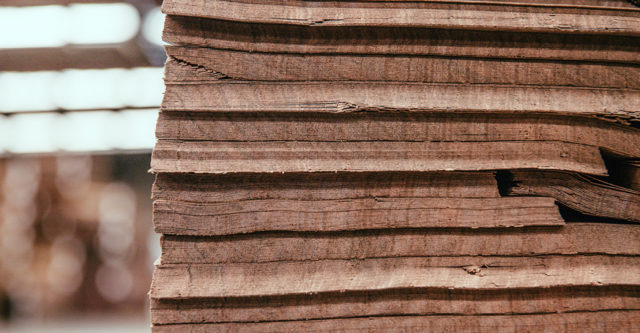Underneath every timber veneer is a substrate, which is an underlying layer or base panel of another material. Veneer can be applied over wood, metal, fiberglass, plastic and many other substrates. Although usually the substrate is a lower quality timber or a cheaper engineered wood product. So long as it is fit for purpose, the substrate’s appearance is irrelevant as it’s hidden beneath the veneer. There are a number of options for substrate, including but not limited to:
● Particleboard;
● Medium Density Fibreboard (better known as MDF);
● Plywood; and
● Blockboard.
Particleboard, also known as Chipboard, is stable, strong and inexpensive. It’s an engineered wood product that is manufactured from chips of wood, sawmill shavings and a synthetic resin or other binder. It is suited for internal applications such as furniture and cupboards. It does not resist moisture well, but there is a moisture resistant type available.
MDF is good for use in situations where the edges are to be moulded and exposed. It is also an engineered wood product. MDF is made by breaking down hardwood and softwood into wood fibres and combining it with wax and resin. Other chemicals can be added during manufacturing for more specific protection, like fire retardant. It is formed into panels by applying high temperature and pressure. It has an even density and is smooth on both sides. MDF is generally denser than plywood. Generally it is favoured for internal uses, such as furniture and fitouts, due to its poor moisture resistance. However, moisture resistant MDF is available, but again should be used for interior applications as it is not waterproof.
Plywood is made by gluing many sheets, at least three, of wood together. This process produces a very durable and sturdy wood. It has the inherent advantageous characteristics of wood plus the enhanced properties that come from its laminated structure. Plywood is also resistant to high impact, coping well with short-term overload because it distributes it over a larger area. The cross laminated construction of Plywood also makes it relatively stable under temperature and moisture changes. It has a high strength to weight ratio and resists corrosion as well. There are various types of plywood so choosing the right plywood for each application is very important.
Blockboard is a composite product made up in its core of wood strips bonded together as a slab, then it is faced on each side with layers of wood veneer. It is often used for manufacturing solid core doors.
Different substrates require the use of different glues and, in some cases, veneers with different types of backing. This is something best left to the experts to ensure a quality outcome. Our team can provide advice with regard to suitable substrates for your project requirements. This is just one of many important considerations in specifying timber veneer and ensuring the outcome exceeds your expectations.



